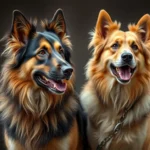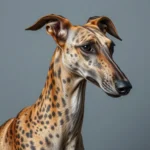
Introduction
Dog breeds are categorized groups of domesticated dogs that share specific physical and behavioral traits. Understanding different breeds is essential for potential pet owners, as it helps in selecting the right companion that fits their lifestyle and preferences. Among the many fascinating breeds, the Silkzer stands out for its unique blend of characteristics.
The Silkzer breed is a hybrid dog that combines the traits of the Silky Terrier and the Schnauzer. This charming breed is relatively new but has quickly gained popularity due to its adorable appearance and vibrant personality. The development of the Silkzer has brought together the best qualities of its parent breeds, making it an attractive choice for families and individuals alike.
In this article, we will delve into the characteristics, history, health considerations, training needs, and overall care for the Silkzer. Understanding these aspects will help prospective owners make informed decisions about welcoming a Silkzer into their homes.
Understanding the Silkzer Breed
Physical Characteristics
The Silkzer is a small to medium-sized breed, typically weighing between 10 to 20 pounds and standing around 10 to 14 inches tall at the shoulder. This compact size makes them suitable for various living environments, including apartments and houses.
Their coat is one of their most distinguishing features. The Silkzer has a long, flowing coat that is soft and silky, reminiscent of the Silky Terrier’s fur. Grooming is essential, as they require regular brushing to prevent mats and tangles. A grooming routine every few weeks, along with occasional professional grooming, will keep their coat looking its best. They can come in various colors, including black, white, tan, and combinations of these shades.
Temperament
The Silkzer is known for its friendly and affectionate nature. They are typically very social dogs, enjoying the company of their families and other pets. Their temperament makes them an excellent choice for families with children, as they are generally tolerant and playful.
In terms of energy levels, Silkzers are moderately active. They enjoy playtime and daily walks but can adapt well to a less active lifestyle as long as they receive mental stimulation. This breed is known for being intelligent and eager to please, making training relatively straightforward.
History and Origin of the Silkzer
Ancestry
The Silkzer is a crossbreed that inherits traits from its parent breeds—the Silky Terrier and the Schnauzer. The Silky Terrier, originating from Australia, is known for its beautiful, long coat and lively personality. Schnauzers, on the other hand, come in three sizes (Miniature, Standard, and Giant) and are recognized for their distinctive bearded face and versatility as both companion and working dogs.
The combination of these two breeds results in a dog that is not only visually appealing but also possesses a wonderful temperament. The Silkzer inherits the intelligence and alertness of the Schnauzer while benefitting from the Silky Terrier’s affectionate nature.
Development of the Breed
The Silkzer was developed in the late 20th century as breeders sought to create a hybrid dog that would combine desirable traits from both parent breeds. As more people began to appreciate the charm of designer dogs, the Silkzer gained recognition in dog shows and among pet enthusiasts.
While the breed does not have formal recognition from major kennel clubs, it has a growing community of admirers and advocates who continue to promote its unique qualities. The ongoing interest in the Silkzer has led to a greater understanding of its characteristics and care needs.
Health Considerations
Common Health Issues
Like many mixed breeds, the Silkzer can inherit health issues from its parent breeds. Common concerns include hip dysplasia, patellar luxation, and certain eye conditions. Regular veterinary check-ups are crucial to catch any potential health problems early on.
It’s essential to be aware of the health history of the parent breeds. A reputable breeder will conduct health screenings for the parent dogs, which can reduce the risk of genetic health issues in the puppies.
Preventative Care
Prevention is always better than treatment. Regular vaccinations, deworming, and flea and tick prevention are essential for keeping a Silkzer healthy. Nutrition also plays a critical role in their overall well-being. A balanced diet that meets their energy needs and is appropriate for their age and size will help maintain a healthy weight and promote good health.
Training and Socialization
Basic Training Needs
Training is a vital part of raising a Silkzer. Early socialization and obedience training should begin as soon as you bring your new puppy home. These dogs are intelligent and eager to learn, making them relatively easy to train with the right approach.
Positive reinforcement techniques, such as praise, treats, and playtime, work best with a Silkzer. Consistency is key, and short, engaging training sessions will keep them interested and focused.
Socialization
Socializing a Silkzer is equally important. Exposing them to different people, environments, and other animals helps develop their confidence and reduces the likelihood of behavioral issues. Puppy classes, dog parks, and playdates with other dogs can provide valuable social experiences.
Living with a Silkzer
Ideal Living Conditions
The Silkzer is adaptable and can thrive in various living conditions. They do well in apartments, provided they receive regular exercise and mental stimulation. A house with a small yard is also suitable, but they do not require extensive space to be happy.
Daily walks and playtime are essential for their physical and mental health. Engaging in interactive play, such as fetch or tug-of-war, can help meet their exercise needs while strengthening the bond between you and your Silkzer.
Family Compatibility
One of the most appealing traits of the Silkzer is its compatibility with families. They tend to get along well with children and are known for their playful nature. However, supervision is always recommended when they are around young kids to ensure safe interactions.
The Silkzer can also coexist peacefully with other pets, especially if socialized from a young age. Their friendly demeanor usually helps them form bonds with other dogs and even cats.
Grooming and Maintenance
Grooming Needs
Grooming is an essential part of caring for a Silkzer. To maintain their beautiful coat, regular brushing is necessary—ideally, two to three times a week. This frequency helps remove loose hair and prevents matting.
Bathing should be done as needed, usually every month or so, using a gentle dog shampoo to keep their coat clean and healthy. Regular grooming not only keeps them looking good but also provides an opportunity to check for any skin issues or parasites.
Dental and Ear Care
Dental hygiene is crucial for the Silkzer. Regular teeth brushing, dental chews, and veterinary dental cleanings will help prevent dental disease, which is common in small breeds.
Ear care is also important. The Silkzer can be prone to ear infections due to their floppy ears. Routine ear cleaning with a veterinarian-recommended solution will help keep their ears healthy and free from wax buildup.
Fun Facts about Silkzer
Unique Traits
The Silkzer is known for its charming and playful personality. They often have a quirky sense of humor and enjoy engaging in activities that stimulate their minds. Their loyalty and affection towards their families make them excellent companions.
Famous Silkzer Dogs
While there may not be any famous Silkzer dogs in television or film, the breed’s growing popularity is leading to more recognition. Many pet owners share their Silkzer’s antics and achievements on social media, showcasing their unique traits and adorable appearances.
Conclusion
In summary, the Silkzer is a delightful breed that combines the best attributes of its parent breeds, the Silky Terrier and the Schnauzer. With their affectionate nature, adaptability, and moderate energy levels, they make wonderful companions for families and individuals alike.
The key to a happy and healthy Silkzer lies in understanding their needs, from training and socialization to grooming and health care. For those considering adding a Silkzer to their family, they are sure to find a loyal and loving friend. Responsible pet ownership and a commitment to their well-being will ensure that your Silkzer thrives and brings joy to your life for many years to come.









